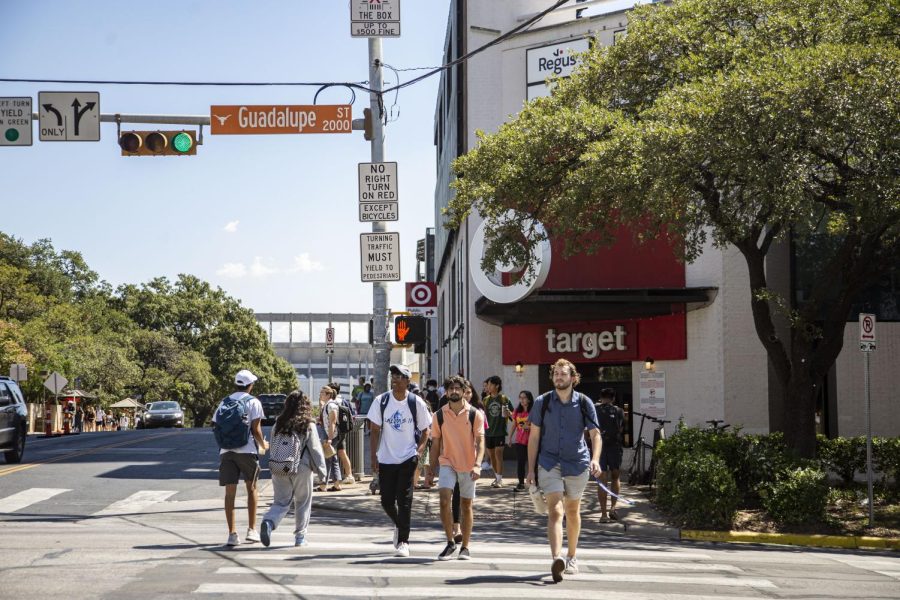Target’s ‘dynamic pricing’ explains inflated cost of West Campus store
September 23, 2022
Target matches prices to their competitors — one of their biggest competitors being themselves.
“I have noticed that everything is higher,” public health freshman Leilani Cheverez said about shopping at the Target on Guadalupe Street. “I live at Dobie which is right above this, and I don’t have a car, so it’s the closest place. I don’t have a choice, really.”
Cheverez said she shops at Target for groceries and other essentials, especially since her meal plan on campus isn’t unlimited. Out of the 16 items in her cart Wednesday afternoon, Cheverez found that seven had a higher price at the Target on Guadalupe than they had at a different location. At Austin East just 3 miles away, Cheverez would have saved a total of $4.30 on items like crackers, juice, sausage, lunchables and menstrual products.
Andrew Gershoff, a professor and department chair of marketing at McCombs, said the higher prices at the Target on Guadalupe are due to “dynamic pricing,” a practice where retailers adjust prices based on demand and profitability over time or by different locations.
Due to dynamic pricing, shopping at the Target near UT campus can be more expensive than other Target stores across the state. For students like Cheverez, the cost differences can add up.
Guadalupe Target employee Danielle Beary said shoppers have the option to price match, which means they can show an employee a lower price offered elsewhere for the same product and get the product at Target for this lower price.
“I have tried price matching myself, because there’s always cheaper stuff out there,” psychology junior Beary said. “In general, other stores tend to be cheaper.”
When the Texan asked Target about the price differences between the Target on Guadalupe and other locations in the Austin area, the corporation explained it as standard retail practice.
“If a guest finds any item for a lower price across any of the ways they can shop Target, or from select competitors, we’ll price match it,” a Target corporate representative said in an email. “Like many retailers, overall prices and promotions may vary by location and channel.”
Beary guesses that the store’s small size might play a role in the price increase since the location is a satellite store. Gershoff said that customers are more likely buying smaller quantities at this Target, so charging more may make up for selling less merchandise. He said prices may also be higher because Target is the most accessible grocery store to campus, so there’s less competition.
However, Gershoff says that there may be other business reasons for the price difference at the Guadalupe storefront that people should consider. He also said that while dynamic pricing can seem unfair, it can potentially benefit price-sensitive shoppers by giving them options on how much they pay.
“If you charge different prices, the people who pay more are effectively subsidizing the cost for the people who can’t,” Gershoff said.
Cheverez said the price disparities surrounding the UT campus impact both students and West Campus residents. She said students may be especially affected by Target’s higher prices, since transportation is even more limited in their case and resources even harder to come by.
“I’ve noticed that … everyone around here is kind of broke,” Cheverez said. “If people don’t have another option, (stores) can exploit the fact that this is their only option to shop at.”



